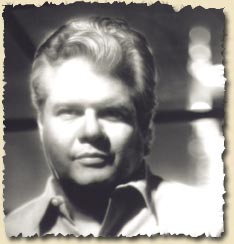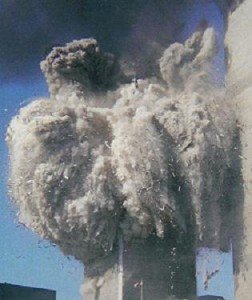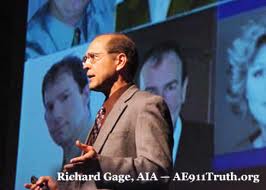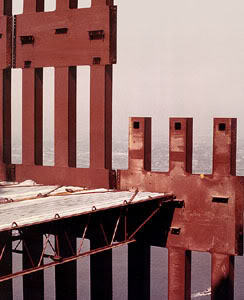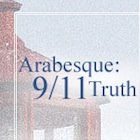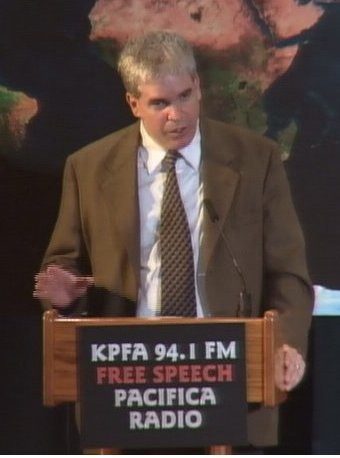Editor in chief of Open Chemical Physics Journal resigns after controversial article on 9/11
by SnowCrash
911blogger.com
The editor in chief of the journal where recently the paper: “Active Thermitic Material Discovered in Dust from the 9/11 World Trade Center Catastrophe” was published, resigned, claiming she wasn’t informed of the publication. She proceeds to provide not a single solid scientific rebuttal, only administrative bickering and personal political bias against, well.. inconvenient science. One particularly notable comment attributed to Ms. Pileni is this one: “Marie-Paule Pileni points out that because the topic lies outside her field of expertise, she cannot judge whether the article in itself is good or bad.”.
Strangely, her areas of research seem to contradict that. I’ll quote you an excerpt of her resume:
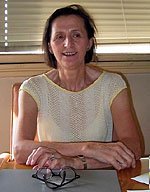 OTHER ACTIVITIES
OTHER ACTIVITIES1990-1992: Chairperson on workshops related to the French Defense research.
1989-1992: Consultant at the Minister of Recherche concerning the National Defense 1989: Member of the “Institut des Hautes Etudes de Défense Européenne”.
1987-1988: Member of the ’“Institut des Hautes Etudes de Défense Nationale” (IHEDN)1984-1986: Member of National exam in ChemistryEDITORIAL BOARD MEMBERSHIP
2006: Accounts of Chemical Research, American Chemical Society.
Journal of experimental nanosciences, Publisher Taylor&Francis.
2002: Journal of Physical Chemistry, Board member, American Chemical Society.
CONSULTING EXPERIENCE
1990-1994: Société Nationale des Poudres et Explosifs, SNPE, France (Literally translated: National Society of Powders and Explosives)
LABORATORY MANAGEMENT
2001: Laboratoire des matériaux mésoscopiques et nanomètriques, LM2N.
1992-2000: Structure et réactivité des systèmes interfaciaux, SRI. (Literally translated: Structure and reactivity of interfacial systems)
Interesting. Firm ties with the French/European military industrial complex. Experience with explosives and nanotechnology. It’s reasonable to assume Ms. Pileni is familiar with nano-explosives. So Ms. Pileni’s contention that “the topic lies outside my field of expertise” is false. Why would a nanotechnology expert and former consultant for the SNPE not want to comment on a paper discussing nano-thermitic explosives? A paper which caused her to resign? Puzzling.
(Credit goes to DHS for first bringing this resignation to my attention in a comment on 911blogger. It’s being discussed at Randi** as well.)
Update:
The phrase “powders and explosives” and “powdered explosives” I used previously may have caused some confusion. I decided to investigate further. What I found with some simple googling was disconcerting to say the least. Let’s clear up the confusion first. The French word “la poudre” may mean several things. Normally, it means “powder”. However, it can also mean “gunpowder”, or something along the lines of “solid propellant”. I invite French readers of 911blogger to comment further, since my French isn’t stellar. The SNPE appears to be a French corporation manufacturing propellants and explosives. This can involve, for example, the charges that set off to open and deploy air bags in a car accident. They were preceded by the “Service des poudres de l’Armée”, which I would translate as “Army Gunpowder Service”. Without going into the history of France’ gunpowder supply too much, this should put it into context for you what is probably meant by “Poudres et Explosifs”. Again, I invite French 911bloggers to elaborate.
I visited SNPE’s website, and eventually found the English version. There, under the banner “Energetic Materials”, I found the following explanation: “SNPE Matériaux Energétique manufactures propellant charges and energetic equipment, primarily for the defense and automotive industries, and also makes propellants and explosives for military applications“
Wow. Ok, well that leaves little room for interpretation. Clicking leads me to some other sites, explaining further the activities of the “Powders and Explosives” division:
http://www.materiaux-energetiques.com/fr/activites-poudresExplosifs.shtml
This site’s in French. The first paragraph reads:
“The only European company offering the full range of energy products for the civil and defense, EURENCO has strengthened its production capacity in Europe to better meet market needs. Increasingly involved in new programs, EURENCO has reorganized into two units, one for powder and another for explosives, to improve its flexibility and responsiveness and focus on its customers and programs”
The “Powders” division seems to be more involved with ammunition, while the “Explosives” division seems to be preoccupied with developing “insensitive munitions”. That rings a bell. Insensitive munitions probably refer mostly to stability, in the sense that it’s much safer to have munitions that are less prone to become instable due to e.g. heat, shock, damage or general degradation. I can’t help but think about Jim Hoffman’s FAQ entry: How could charges have been pre-positioned in the Towers in such a way that the plane crashes and fires wouldn’t have set them off? (I want to strongly emphasize I’m not implying any sort of connection between the two; I merely find mentioning Hoffman’s theoretical scenario relevant to the subject at hand.)
I proceed to visit the site of EURENCO. Interesting. EURENCO is apparently involved in such joyous things as high explosives, explosives for oil and gas, cast PBX charges, and, get this: explosives for demolition purposes.
But…it gets better. Would you believe it if I told you EURENCO likes to toy around with new energetic molecules as well?
Then..it got a little strange. I stumbled upon the Dutch International Institute for Social History, which brought something back to light which I have long since forgotten:
“Documents regarding the explosion of the AZF factory at the chemical site of the Sociéteé Nationale de Poudre et d’Explosifs (SNPE) in Toulouse 21 September 2001 and the events afterwards 2001-2002.”
Wikipedia documents it here, and I find the last paragraph especially interesting:
“On October 4, 2001, France’s then Environment Minister Yves Cochet announced that the explosion “may have been a terrorist attack” and identified Hassan Jandoubi, a plant sub-contractor killed in the blast, as a person under investigation. French anti terrorist authorities were prohibited by the Toulouse prosecutor from searching Jandoubi’s house for five days after the incident. Police declared that Jandoubi had “possible Islamic fundamentalist sympathies”, yet by the time the search was finally conducted, Jandoubi’s girlfriend had disposed of all traces of his clothes or photos. French authorities described the delay as damaging to the investigation.”
Contrary to Ms. Pileni’s remarkably insincere comments, the nano-thermite paper fits exactly in her area of expertise. I have this strange feeling I might have opened Pandora’s box, and I encourage contributors to 911blogger to follow up on this interesting story.
From Screw Loose Change*, translated from videnskab.dk:
Editor in chief resigns after controversial article on 9/11
28 April 2009
From videnskab.dk ( Danish science news service)
An article on explosives in the World Trace Center was published in a scientific journal without the editor in chief knowing about it. Now she is resigning, she tells Videnskab.dk ([science.denmark])
By Thomas Hoffman (th@videnskab.dk).
It created a great attention, surprise and suspicion when the Open Chemical Physics Journal in April published a scientific article on remains of nanothermite which were found in great amounts in the dust from the WTC.
One those most surprised is apparently the editor in chief of the journal. Professor Marie-Paule Pileni first heard about he article when videnskab.dk wrote to her to ask for her professional assessment of the article’s content. The e-mail got her to immediately close the door to the journal.
“I resign as the editor in chief”, was the abrupt answer in an email to videnskab.dk
PRINTED WITHOUT PERMISSION
A telephone call reveals that editor in chief Marie-Paule Pileni had never been informed that the article was going to be published in The Open Chemical Physics Journal, which is published by the journal giant Bentham Science Publishers.
“They have printed the article without my permission, so when you wrote to me, I did not know that the article had appeared. I cannot accept this, and therefore I have written to Bentham that I resign from all activities with them”, explains Marie Paule Pileni, who is professor with a specialty in nanomaterials at the renowned Universite Pierre et Marie Curie in France.
She feels not only stabbed in the back, but is puzzled that the article on dust analysis following the terror attack on the U.S. on 11 September 2001 could at all have found its way to the Open Chemical Physics Journal.
“I cannot accept that this topic is published in my journal. The article has nothing to do with physical chemistry or chemical physics, and I could well believe that there is a political viewpoint behind its publication. If anyone had asked me, I would say that the article should never have been published in this journal. Period.” Concludes the former editor in chief.
FAILING GRADES TO THE JOURANL
The editor-in-chief’s dramatic departure gives critics additional reason to doubt the article’s conclusions, but Marie-Paule Pileni points out that because the topic lies outside her field of expertise, she cannot judge whether the article in itself is good or bad.
Nevertheless, the publication gets her to give the Open Chemical Physics Journal failing grades.
“I was in fact in doubt about them before, because I had on several occasions asked about information about the journal without having heard from them. It does not appear on the list of international journals, and that is a bad sign. Now I can see that it is because it is a bad journal”, says Marie-Paule Pileni and continues:
“There are no references to the Open Chemical Physics Journal in other articles. I have two colleagues who contributed to publishing an article which was not cited anyplace either. If no one reads it, it is a bad journal, and there is not use for it”, is the harsh verdict.
The professor informs us that a few years ago she was invited to be editor in chief of a journal which would open new possibilities for new researchers and because she supports the idea of open access journals where the articles are accessible to everyone, she said, “Yes” thank you.
“It is important to allow people to try and gain success, but one should not be allowed to do everything, and all this is certainly a bunch of nonsense. I try to be a serious researcher, and I will not have my name connected with this kind of thing,” concludes Marie-Paule Pileni.
DOES NOT CHANGE THE INVESTIGATION
The editor-in-chief’s decision is viewed as regrettable by the Danish chemist Niels Harrit, who is one of the authors to the controversial article on nanothermite in the dust from the WTC.
“It surprises me, of course, and it is regrettable, if it discredits our work. But her departure doesn’t change our conclusions, for it is a purely personnel related thing she his angry about. I still believe that we have carried out chemical physics, and if there is something wrong with our study, she is welcome to criticize us for it,” says Niels Harrit, Associate Professor at the Institute of Chemistry at the University of Copenhagen.
It is Niels Harrit’s coauthor Steven Jones who was in charge of contact to Bentham, and therefore the Danish researcher is presently not aware which responsible assistant editor the group has been communicating with.
However, he does know the names of the two researchers –so-called referees—who have reviewed he article, but he will not give their names because they ‘are in principle anonymous’.
DANE WITHDREW FROM THE JOURNAL
Niels Harrit’s superior at the University of Copenhagen, Nils O. Andersen has himself participated in the pool of researchers who could be selected as editor, on an article which should be published in The Open Chemical Physics Journal. He has recently chosen to resign from the journals Editorial Advisory Board.
He informs videnskab.dk that the decision has nothing to do with Niels Harrit’s article, and that he otherwise did not achieve having any experiences with the journals, so that he cannot shed further light on how the journal operates.
“Open access is an exciting development, and as a principle the idea should be tried out for there is no reason for the commercial publishers to earn money from our work. But professionally, the journal lay at the margin of my expertise, and as I had said No to be editor of two articles, I decided that I would not use my time on anything else.”, explains Nils O. Andersen, dean of the faculty of Natural Sciences and editor of the European Physical Journal D.
It has not yet been possible to get any comment from Bentham Science Publishers.
* hxxp://screwloosechange.blogspot.com
** hxxp://forums.randi.org/showthread.php?t=141353
